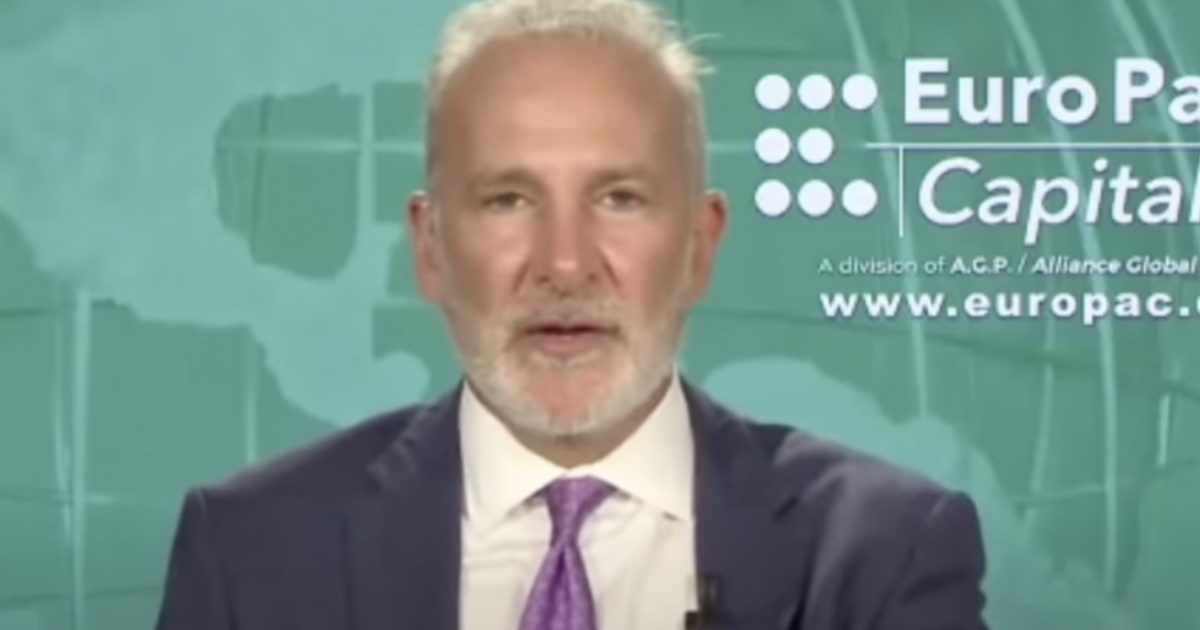
After March Consumer Price Index figures demonstrated a 1.2% month-to-month increase and an 8.5% annual increase, talks about mass inflation have surfaced yet again.
Always finding a way to cope about inflation figures, the corporate press is now arguing that core inflation is not as high as expected. In turn, many pundits are arguing that the US has reached a point of “peak inflation.”
However, contrarian investor and prominent gold bug Peter Schiff believes that this is wishful thinking.
At Schiff Gold, a recent post noted that the March CPI figures detailed the initial impact of Russia’s invasion of Ukraine and the rising oil prices that ensued. While the CPI was a tad higher than the mainstream expectation, several experts still believed that it would go much higher.
Most of the economic commentariat still expressed their relief that the inflation numbers weren’t higher.
That said, Schiff brought some much-needed economic realism to the table in explaining how the CPI measures of today are calculated differently from those of the 1980s.
Schiff observed the following:
Forty years ago, we used entirely different CPI than we use today. And as far as I can tell, we are generally missing the mark by about half, meaning that if we use the 1981 CPI to measure the 2022 price increases, we probably would see a year-over-year rise of 17%, which is twice eight-and-a-half.
The projections for March’s core CPI, which don’t include unstable energy and food prices, were 0.5% month-on-month. These projections turned out to be lower, at 0.3%.
“That was a good number as far as the markets were concerned because the core CPI didn’t go up nearly as much as thought,” Schiff added.
The year-over-year core number turned out to be 6.5%, which was slightly better than the projected 6.6%. Schiff noted the following:
“A little worse on the headline. A little better on the core. But overall, I guess the whisper numbers were that all these numbers would come in hot, and since they didn’t, the market initially was relieved.”
While the core CPI was lower than projected, 0.3% remains a high figure. As Schiff Gold pointed out, this figure is “still 3.7% per year, almost double the Fed’s 2% target.”
Schiff called attention to the fact that it’s pointless to observe year-over-year core inflation while removing food and energy from the equation, which are two things average people need in their daily lives:
Families can’t strip out food and energy. They can’t survive without food and energy. When food and energy prices are up year-over-year big, that’s not volatility. That’s a trend. And you can’t ignore that trend when you’re trying to calculate inflation and determine whether or not you have a problem. You have a big problem.
Under normal economic conditions, core prices should plummet as energy and food prices climb upwards. When people spend more of their money on energy and food, they have less money to spend on other items. Schiff detailed this:
So, core prices should be falling as the food and energy prices are rising. But the reason that all prices are rising is because everybody has got more money. We’ve got more money to buy food and energy, and we’ve got more money to buy everything else. Where’s all that money coming from to buy all this stuff? It’s coming from the Federal Reserve. The Federal Reserve is creating all the inflation in the core and in the headline. It’s not Putin and it wasn’t COVID.
All told, it behooves people to realize that the ruling class has an incentive to obfuscate how bad things are in the US. One must exercise tremendous skepticism when dealing with such figures. The US’s monetary policies in conjunction with its fiscal and draconian pandemic response policies are creating an economic disaster that most members of the ruling class refuse to even consider.
John Williams’ ShadowStats is one good source that depicts the current economic rot in the US. Indeed, the US is reaching a turning point in its economic history. This will require people to wake up and realize that economic stagnation is going to become the norm. The only way to reverse course is through a fundamental downsizing of the federal bureaucracy and sounder monetary policies.



